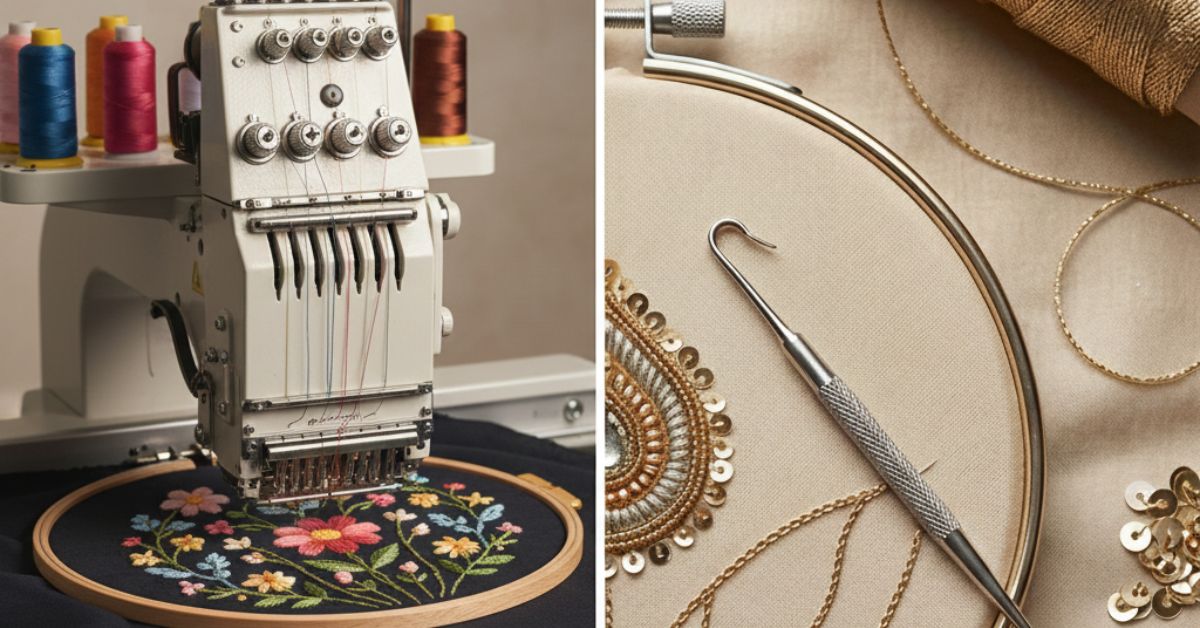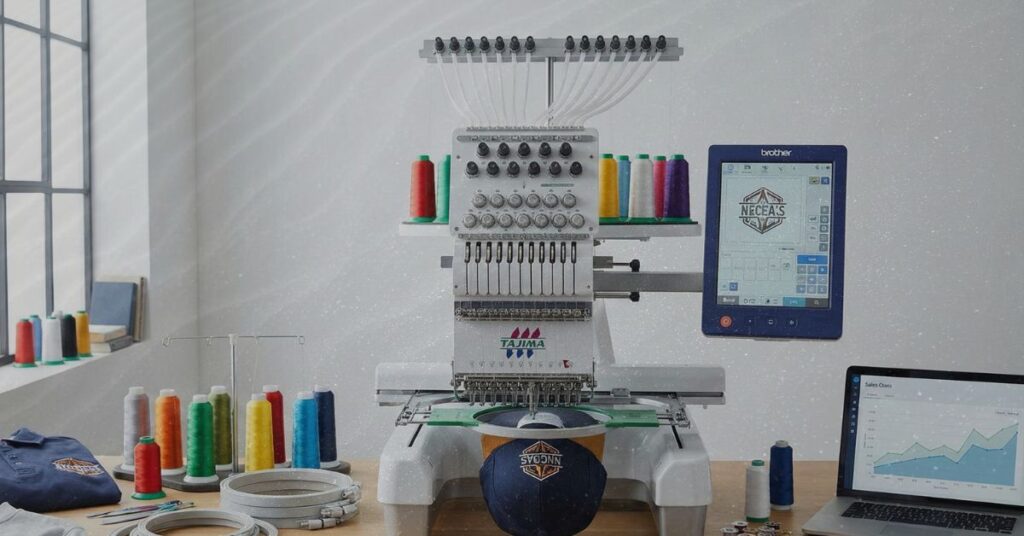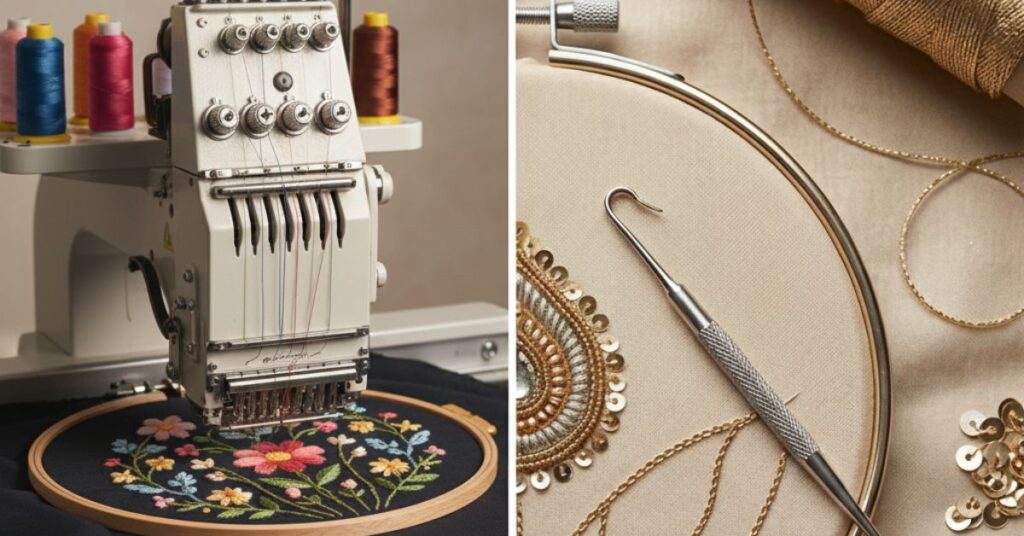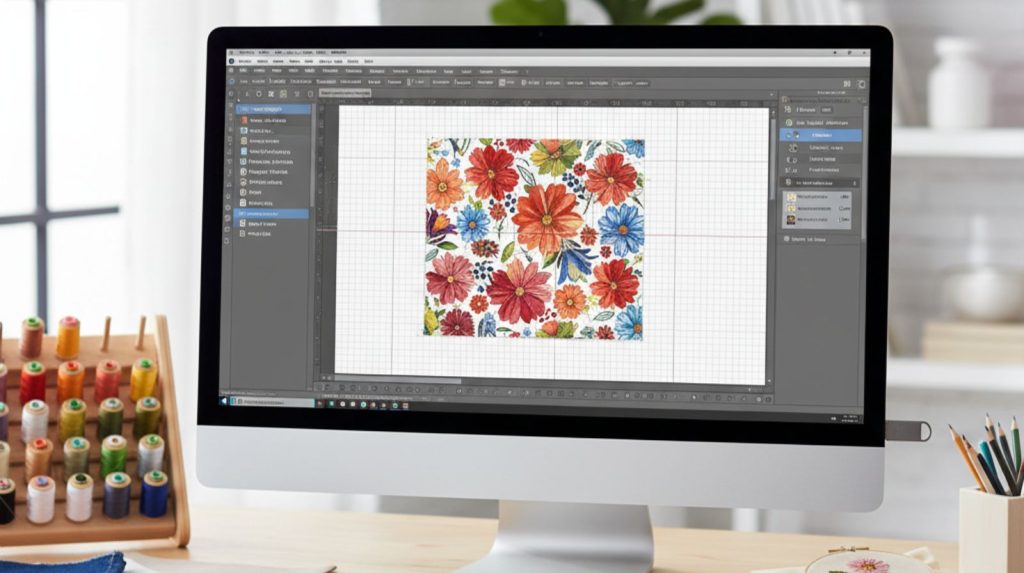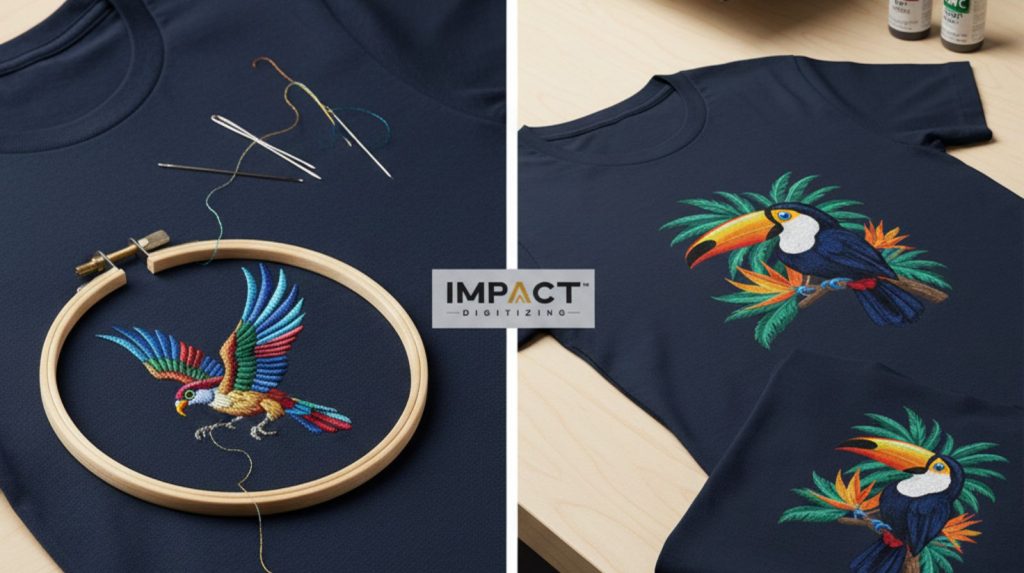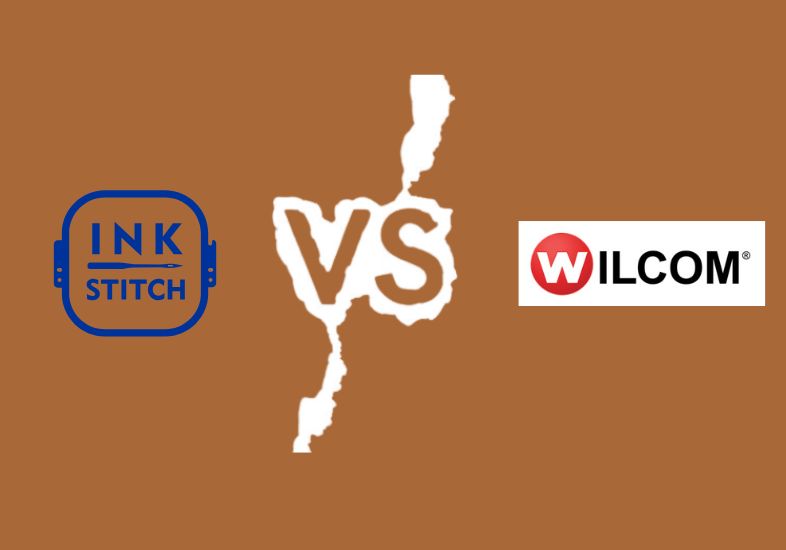Embroidery’s been around now like every day, seriously old-school and it’s still one of the most-loved ways people decorate fabric. It’s grown into a whole bunch of styles all over the world, and yeah, each has its own kind of flair.
Now, does Aari work? That’s sort of in its own league. It’s most specific in the style of embroidery that people mainly relate to fancier stuff like wedding clothes and high-end outfits. Both embroidery and Aari work aim to make fabric look amazing, but how do they do it, the technologies they use, and the vibe they give off? Pretty different.
Embroidery vs. Aari Work
Regular embroidery is kind of an umbrella term. It covers loads of techniques — some basic, some crazy intricate — and it shows up in everything from simple t-shirts to designer home décor. It can be stitched by hand or zipped out by machines, depending on what look you’re going for.
Aari work, though, is way more specific. It’s a traditional Indian embroidery style, done totally by hand using this tiny hook-like needle. The result? Super neat, fine chain stitches that usually get layered up with beads, shiny sequins, pearls, all that rich stuff. While embroidery in general can be casual or formal, Aari tends to land on the fancier side of things, think bridal wear, lehengas, stuff for festivals.
The Tools That Make It Happen
Here’s where things start to split. For embroidery, you just need regular sewing needles or maybe a modern machine if you’re going that route. Machine embroidery’s super fast and clean, good for cranking out lots of the same design.
Aari work? Totally different setup. The main tool is this hooked needle that kind of looks like a mini crochet stick. The fabric’s stretched out tight on a wooden frame, and the artisan uses that hook to do tiny chain stitches from underneath. It’s that tool and motion combo that gives Aari work its signature look.
Stitches and Style
Embroidery’s got loads of stitch options cross stitch, satin stitch, backstitch, running stitch, you name it. Depending on the design, the stitch type changes. It can be really soft and subtle or super bold and graphic.
Aari work, though, sticks mainly to the chain stitch, but not in a plain way. It’s usually dressed up with extra details like shiny beads or tiny mirror operations. The result? A kind of textured, raised surface that catches light in the most satisfying way. You almost always see this on clothing that are meant to stand out.
How It Looks
Embroidery can lean in a bunch of different directions. On cotton, it might feel cute and everyday-friendly like tiny florals on a blouse. But if you switch to silk threads and throw in some metallic tones, you get something a lot more dressy.
Aari, in a way, doesn’t really do “casual.” It’s made for that heavy, ornamental look, packed designs, glitzy finishes, and layers of details. You’ll see it most often on bridal outfits, celebration clothes, or pieces meant to make a statement.
Time and Skill Needed
Embroidery’s pretty flexible when it comes to learning. You can pick up the basics in a weekend and start making simple patterns without too much effort. Machines speed it up even more.
Aari, however, demands patience. The hook-and-appearance method isn’t super easy to master, and adding beads or sequins takes extra precision. Most people learn it from someone who’s been doing it for years. It’s the kind of craft that gets passed down in families.
What It Means Culturally
Embroidery shows up just about everywhere. Every place has its own version like Kantha from Bengal, or Phulkari from Punjab, or even European styles like cross-stitch. People use it on clothes, in art, even for logos sometimes.
Aari work, though, sits deep in Indian history. It was big during the Mughal era, and it’s still a go-to for wedding and festive wear. It’s got that mix of tradition and luxury that makes it feel extra special.
How Much It Costs (and Why)
Since embroidery can be done by machine, there’s a wide price range from cheap stuff in fast fashion to high-end hand-done pieces. It depends on how it’s made.
Aari work is usually on the pricier side. Because it’s hand-stitched and super detailed, it takes hours — sometimes days to finish one piece. That time and skill make it more expensive, but also more unique. It’s not just clothing, it’s craftsmanship.
Tech Meets Tradition (a bit about Impact Digitizing)
These days, even though the art is traditional, most designs get digitized before anyone starts stitching. That’s where companies like Impact Digitizing step in; they help turn artwork into clean, usable files that embroidery machines (or artisans) can follow.
FAQs
1. Is Aari work just another kind of embroidery?
A: Yeah, more or less. Aari is a specific style within embroidery that uses a hooked needle for chain stitching. It’s still embroidery, just with its own flair.
2. Which one’s easier to learn?
A: Embroidery is usually a better place to start. Aari takes a bit more time and skill, so most people move to it after they’ve got the basics down.
3. Why does Aari cost more?
A: It’s handmade, takes longer, and usually includes beads, sequins, and all that detailed work. That makes it more expensive, but also more valuable.
4. Can machines do Aari work?
A: Some machines can copy the chain stitch, sure but it’s not quite the same. Real Aari work has this handcrafted feel that machines just can’t fake. That’s what makes it so special.

